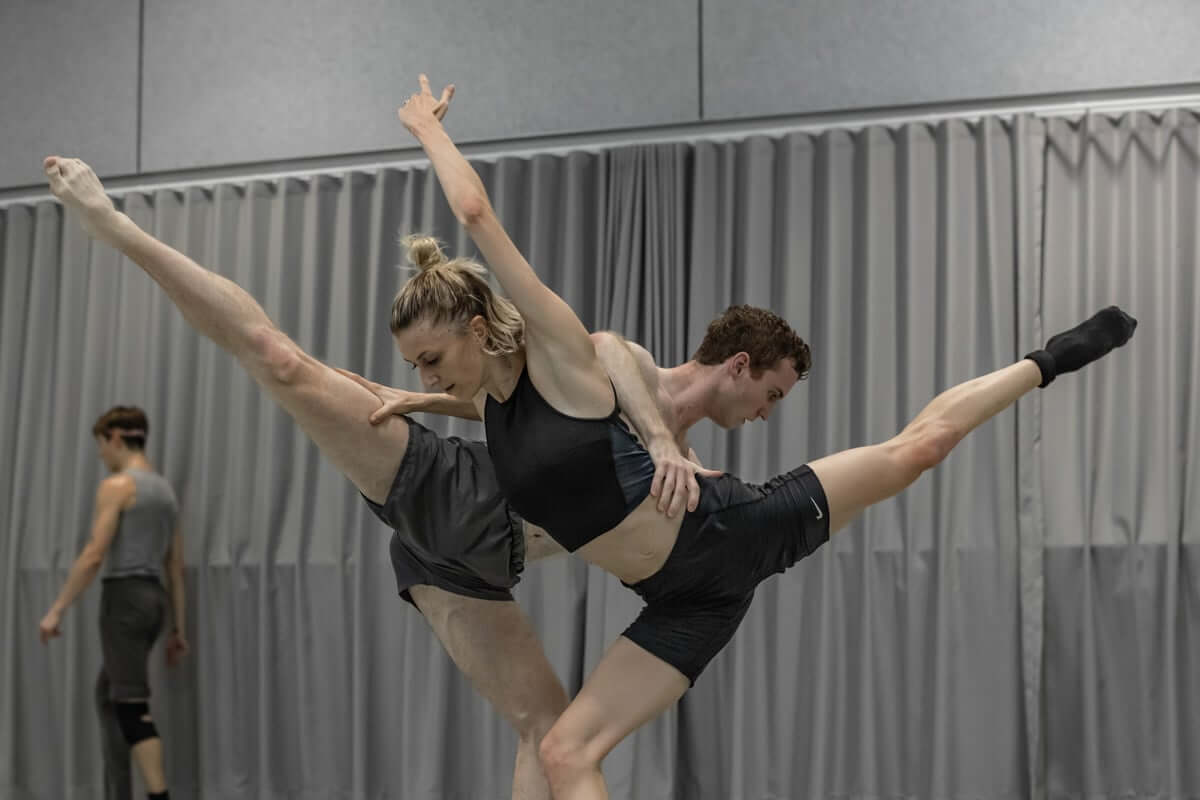Company dancer Juliette Barton on juggling motherhood


published
Photographer
We are so excited to be returning to the stage at the end of November with New Breed, Sydney Dance Company’s annual celebration of the best emerging Australian choreography, in partnership with Carriageworks and generously supported by The Balnaves Foundation.
In our anticipation of the season, we’re chatting to the choreographers.
Second, in our New Breed 2020 choreographer spotlight series is Company dancer Jesse Scales who will premiere her new work Inertia. This is Jesse’s second time choreographing for New Breed after premiering her work What You See in 2016. With stipulations for an entirely socially distanced program in place, Jesse’s process has been both unique and revelatory. Read on to hear about her interest, inspiration and choreographic process this time around.
My choreographic style is still evolving, and I am enjoying it that way. Having said that, there are a few consistencies. I try to remain open to any new and interesting choreographic stimuli, processes, or movement languages in order to remain versatile and I like to place a significant focus on bringing together the theatrical elements of the show; lighting, music, costume, set, and the audience. I also often enjoy working with a dystopian concept which influences movement, staging and sound. This element allows for an increase in the severity of emotions, allowing the dancers to embody them in a visual way.
Creating in this way brought its challenges, like not being able to vibe off each other physically and not having the perfect conditions provided by a dance studio, but there were many benefits. Each dancer had individual and deep responses to the movement tasks which were explored in a way they might not have in the studio. The dancers’ perspective in creating movement had changed due to their surrounds and circumstances, allowing them to think inventively.
I primarily address the subject of inertia in relation to the bystander effect; the inhibiting influence of the presence of others on a person’s willingness to help someone in need. The question I am dealing with is how do we, as bystanders, manifest some sort of physical or mental force that encourages us to become active bystanders? My interest is in witnessing people and their psychological reaction to the social situation at hand.
It was inspired by a moment of real life. Having been intrigued by the bystander effect for a while, the interest was reignited when I myself fell victim to it. I was waiting for the train at Sydney’s Town Hall Station and I found myself feeling increasingly hot and lightheaded. I remember welcoming the cool breeze from the incoming train, but my next memory was lying collapsed on the platform tiles, the train was docked with its doors open. I had fainted, yet to my surprise and later bewilderment, no one had come to my aid. The platform was busy with many passengers, yet still, no one batted an eyelid.
As puzzled as I was at the lack of compassion, I remembered that all of us have succumbed to inertia at some point in our lives. I’m intrigued by the instinctive and conditional decisions we make about whether to change course or not.
Given the current world crisis, creating a socially distanced work is a responsible step towards creating a safe environment in performance spaces. It certainly is challenging, given that I am working with 11 dancers, but it is by no means limiting. We were able to reshape any preconceived ideas of partnering or touching, giving life to alternate pathways.
I would never want to stipulate what an audience’s response to performance art should be. What I can say is be prepared for some true artistry from dancers who have been dying to get back on stage.
It is a little tricky to pick one career highlight because I am fortunate enough to have a few. As well as the ability to work with Rafael Bonachela, we have fantastic opportunities to create with numerous Australian and international choreographers. Touring the world over with such an acclaimed Company is also a wonderful part of my career. But really, just being able to do what I love and what I’m most passionate about as a job is tremendously rewarding.
I listen to a lot of music in a lot of different genres. My absolute favourites are Gorillaz, The Prodigy and The Cure. Currently, the books on my bedside table are Please Kill Me by Legs McNeil and Gillian McCain, and A Little Book of Happiness, gifted by a dear friend.
Life! The ever-changing, multi-faceted, life. People watching is a hobby of mine. It’s a brilliant hobby too as you can do it at any time. And as always, my colleagues.